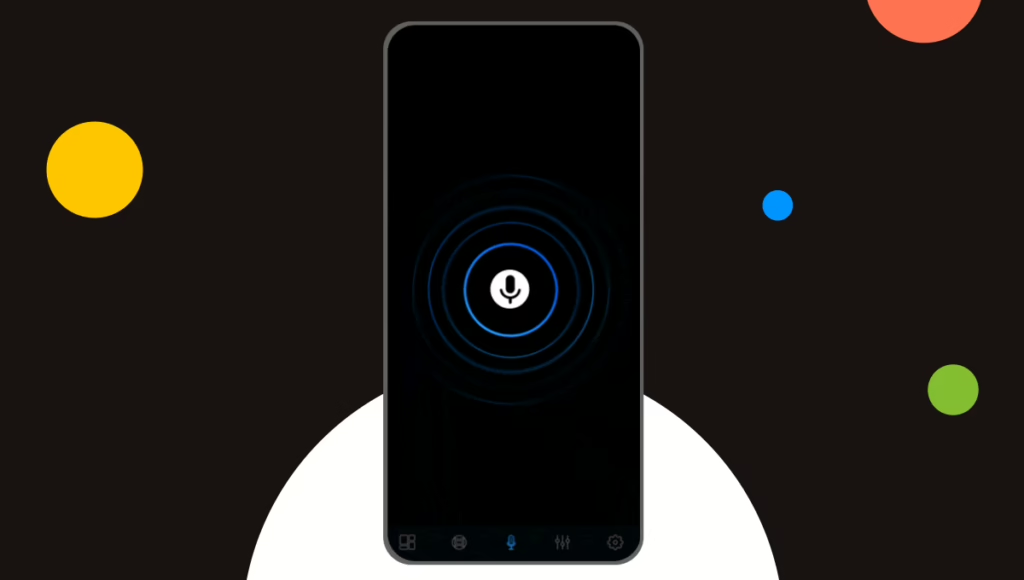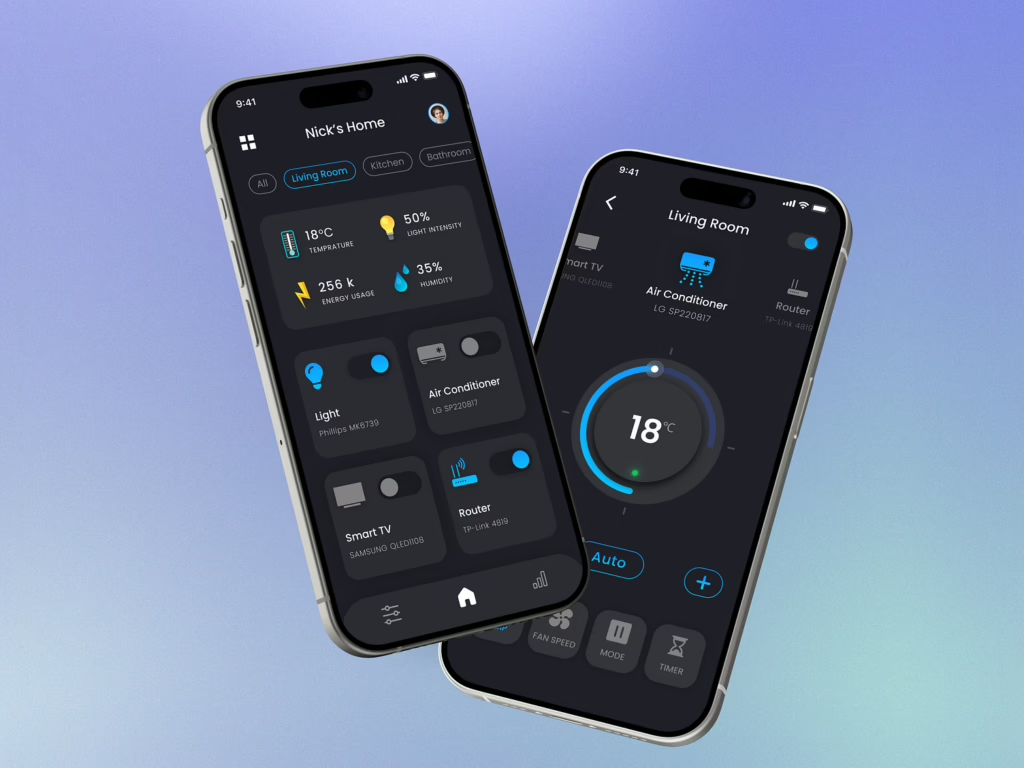Imagine you’re trying to book a flight online, but the website is so cluttered with buttons, pop-ups, and ads that you’re not sure where to start. Now think about a system that understands what you want and helps you complete tasks without making you feel like you’re navigating a maze. Welcome to the world of Invisible UI.
Invisible UI isn’t about magic. It’s about creating interfaces so intuitive and seamless that you don’t even notice them. It’s a design philosophy that focuses on natural interactions and removing unnecessary distractions, allowing technology to work with you rather than against you.
In this blog, we’ll explore what Invisible UI is, why it’s powerful and how it’s shaping the future of usability and design.
What is Invisible UI?
At its core, Invisible UI (User Interface) refers to interfaces that seamlessly blend into the user’s environment, making interactions feel effortless and natural. Unlike traditional UIs filled with buttons, menus, and screens, Invisible UI relies on technologies like voice commands, gestures and context-aware systems to deliver functionality without requiring visible elements.
The Evolution of UI Design
- From Skeuomorphic to Minimalist Design: Early UIs mimicked real-world objects (think buttons that looked like actual buttons). Over time, designers embraced minimalism to reduce visual clutter.
- Toward Invisible: As technology advanced, the focus shifted to reducing the interface altogether, allowing interactions to feel intuitive and less reliant on visual cues.

Examples of Invisible UI
- Voice Assistants: Alexa, Siri, and Google Assistant allow users to perform tasks without touching a screen.
- Gesture-Based Controls: Swiping, pinching, or waving to navigate devices like smart TVs or AR headsets.
- Context-Aware Notifications: Google Maps offering route suggestions based on your routine without you asking.
- Microinteractions: Subtle animations or vibrations that guide the user without visible clutter.
Also read: Voice UX and VUI Design | What Designers Need to Know
The Philosophy Behind Invisible UI
Invisible UI is more than just a design trend; it’s a philosophy rooted in creating frictionless user experiences. Here are the guiding principles:
1. Less is More
When you remove unnecessary visual elements, you reduce cognitive load. Users can focus on the task, not the interface. For example, Apple’s AirPods Pro automatically switch between devices based on what you’re using. There are no buttons or settings to fiddle with—it just works.
2. Human-Centered Design
Invisible UI prioritizes designing around human behavior. It’s about understanding how users naturally interact with their environment and leveraging those patterns. Think of fitness trackers that vibrate to nudge you to move—no need for screens or notifications.
3. When Technology Disappears
The goal of Invisible UI is to make technology feel like an extension of yourself. It becomes so integrated into your life that you forget it’s even there. A prime example is smart thermostats like Nest, which adjust the temperature based on your habits without you lifting a finger.

Key Elements of Invisible UI
Invisible UI thrives on certain elements that enable distraction-free interactions. Let’s explore these in detail:
1. Artificial Intelligence (AI)
AI powers the intelligence behind Invisible UI. Through machine learning, systems can predict user needs and automate tasks. Examples include:
- Smart Suggestions: AI in Google Photos categorizes images for easy access.
- Predictive Typing: Tools like Grammarly improve writing fluency by suggesting corrections.
- Adaptive Interfaces: AI adjusts settings based on user habits, such as brightness in smartphones.
2. Microinteractions
These are subtle cues like haptic feedback, loading animations, or confirmation sounds. They provide clarity without overwhelming the user. Examples include:
- A vibration when you unlock your phone.
- The “thumbs-up” animation on messaging apps.
- Real-time progress bars that offer visual reassurance.
3. Voice Interfaces
Voice commands eliminate the need for screens or buttons. This is particularly useful in situations like driving or multitasking. Examples include:
- Amazon Alexa adjusting smart home settings.
- Siri sending messages or setting reminders hands-free.
4. Gesture Controls
Gesture-based interactions rely on natural body movements. Examples include:
- Swiping through image galleries.
- Raising your hand to pause a video on certain devices.
5. Context-Aware Systems
These systems use sensors, cameras, and data to understand the user’s environment. Examples include:
- Smart fridges suggesting recipes based on their contents.
- Fitness apps offering personalized workout plans.
Benefits of Invisible UI
1. Enhanced Usability
Invisible UI removes barriers by making interactions natural and intuitive. There’s no need to learn how to use it—it adapts to you. For instance:
- Voice commands let users perform tasks while driving or cooking.
- Gestures like swiping left or right feel instinctive and require no instructions.
2. Improved Focus
By eliminating unnecessary distractions, Invisible UI helps users stay focused on their primary goals. Example:
- Fitness apps like Strava use audio cues for progress updates, so users don’t have to glance at their screens while running.
3. Fostering Accessibility
Invisible UI makes technology more inclusive by enabling interactions through voice, gestures, or haptics. This is a game-changer for people with disabilities who might struggle with traditional UIs.
4. Scalable Across Devices
Invisible UI isn’t limited to one type of device. It works seamlessly across smartphones, wearables, IoT devices, and even cars, creating a unified experience.
Challenges and Limitations
As promising as Invisible UI sounds, it comes with its own set of challenges:
1. Design Complexity
Creating Invisible UI requires sophisticated technologies and a deep understanding of user behavior. Missteps can result in frustrating experiences.
2. Over-Reliance on Context
Invisible UIs often depend on context to function correctly. But what happens when they misinterpret user intent? Imagine a voice assistant setting the wrong timer because it misunderstood your command.
3. Privacy Concerns
Invisible UI relies on sensors, cameras, or voice recognition to function. This raises concerns about data collection and user privacy. Designers must find ways to balance functionality with security.
4. User Skepticism
Users may resist interfaces that feel too unfamiliar or “hidden.” It’s important to provide subtle feedback to reassure users that the system is working as intended.
Key Principles for Designing Invisible UI
If you’re designing Invisible UI, here are some principles to follow:
1. Keep it Intuitive
Design around familiar behaviors. Swiping, tapping, or voice commands should feel natural and require minimal learning.
2. Focus on Context
Invisible UI should adapt to the environment. For example, a smart car’s UI should adjust based on whether you’re driving or parked.
3. Provide Feedback
Even though the UI is “invisible,” users need subtle feedback—be it through vibrations, sounds, or small animations—to confirm actions.
4. Test with Real Users
User testing is crucial to understand how people interact with your interface. Iteration ensures your design aligns with user expectations.
5. Maintain Accessibility
Always design for inclusivity. Ensure your interface works for diverse user groups, including those with disabilities.
Examples of Invisible UI
1. Voice Assistants
Smart assistants like Siri and Alexa allow users to control devices, search for information, or even shop without touching a screen.
2. Smart Home Technology
Devices like the Nest Thermostat learn your preferences and adjust settings automatically, making your home smarter without requiring manual inputs.
3. Wearables
Fitness trackers like Fitbit vibrate to remind you to move or alert you of your heart rate changes, removing the need for constant screen interaction.
4. AR and VR
Augmented and virtual reality platforms rely on gestures and spatial awareness, eliminating the need for traditional controls. Think of applications like Microsoft HoloLens in training or design.
The Future of Invisible UI

1. Role of AI and Machine Learning
Advancements in AI will make Invisible UI smarter. Predictive algorithms will anticipate user needs, making interactions even more seamless.
2. Integration with Emerging Tech
Expect Invisible UI to play a major role in:
- Autonomous vehicles: Gesture or voice-based navigation systems.
- Healthcare: Invisible interfaces for monitoring patients without invasive devices.
- Education: AR-powered learning tools.
3. Towards a Screenless Future
We’re heading towards a world where screens might no longer dominate. Instead, natural interactions will be the norm, with devices blending effortlessly into our lives.
Also read: Sustainable UX/UI Design | Why It Matters and How to Start
Conclusion
Invisible UI represents the next evolution in design—one that prioritizes usability, accessibility, and minimalism. By removing distractions, it creates a more intuitive and focused user experience. From smart homes to wearable tech, Invisible UI is already changing how we interact with technology.
Ready to embrace the power of Invisible UI? Whether you’re building products or reimagining existing ones, designing with intention is key. If you’re seeking expert guidance, Hapy Design is here to help bring your ideas to life.
